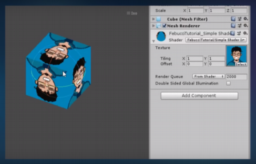- the post introduces new D3D12 features available with latest win10 preview version
- DirectX Raytracing Tier 1.1 introduces ExecuteIndirect, dynamic raytracing PSO additions and Inline Raytracing
- Inline Raytracing allows RayQuery to be called from every shader stage
- DirectX Mesh Shader are similar to nvidia mesh shaders, allowing more flexibily in the vertex processing pipeline
- DirectX Sampler Feedback allows the recording of which parts of textures have been accessed
- enabling more fine grained streaming and texture space shading scenarios

- the video explains the basic of shaders in Unity for beginners

- the ARM developed sets of samples to showcase best practices for Vulkan on mobile is now open-source and part of Khronos
- article has list of samples and tutorials for a number of different areas

- Khronos published a unified Vulkan Samples Repository
- all samples are based on the same framework and have been reviewed and are maintained by Khronos

- the article shows the Unity shader implementation for stylized and unlit grass
- a geometry shader is used to spawn a variable number of grass blades based on camera distance
- grass movement by wind is emulated with a displacement texture

- starts by showing how to create a small 2D world procedurally
- small overview of explicit vs implcit surface ray tracing
- then shows the steps used to render a procedural mini planet
- including ocean waves, mountains and clouds

- summary of SIGGRAPH 2019 for a hybrid solution between temporal anti-aliasing with adaptive ray tracing
- using heuristics to detect when adaptive ray tracing provides the best improvements

Thanks to Michael Riegger for support of this series.
Would you like to see your name here too? Become a Patreon of this series.
